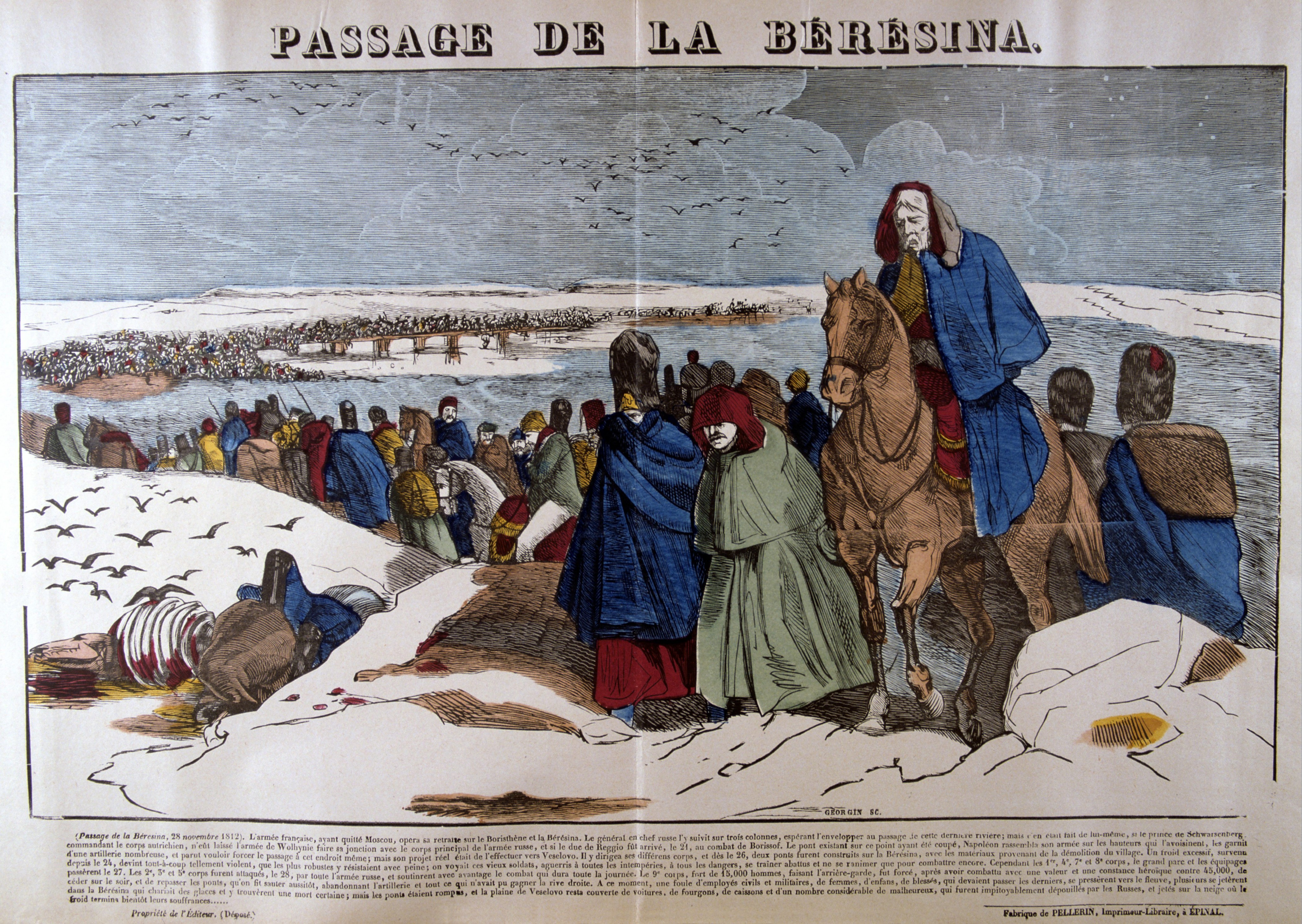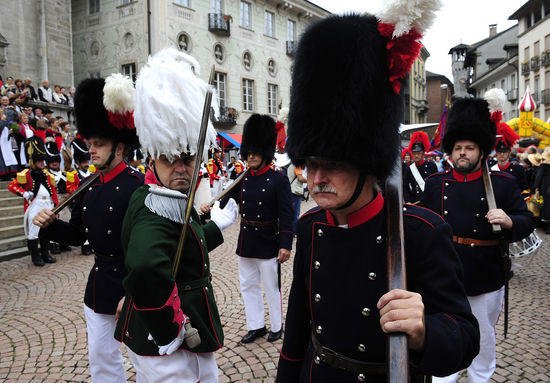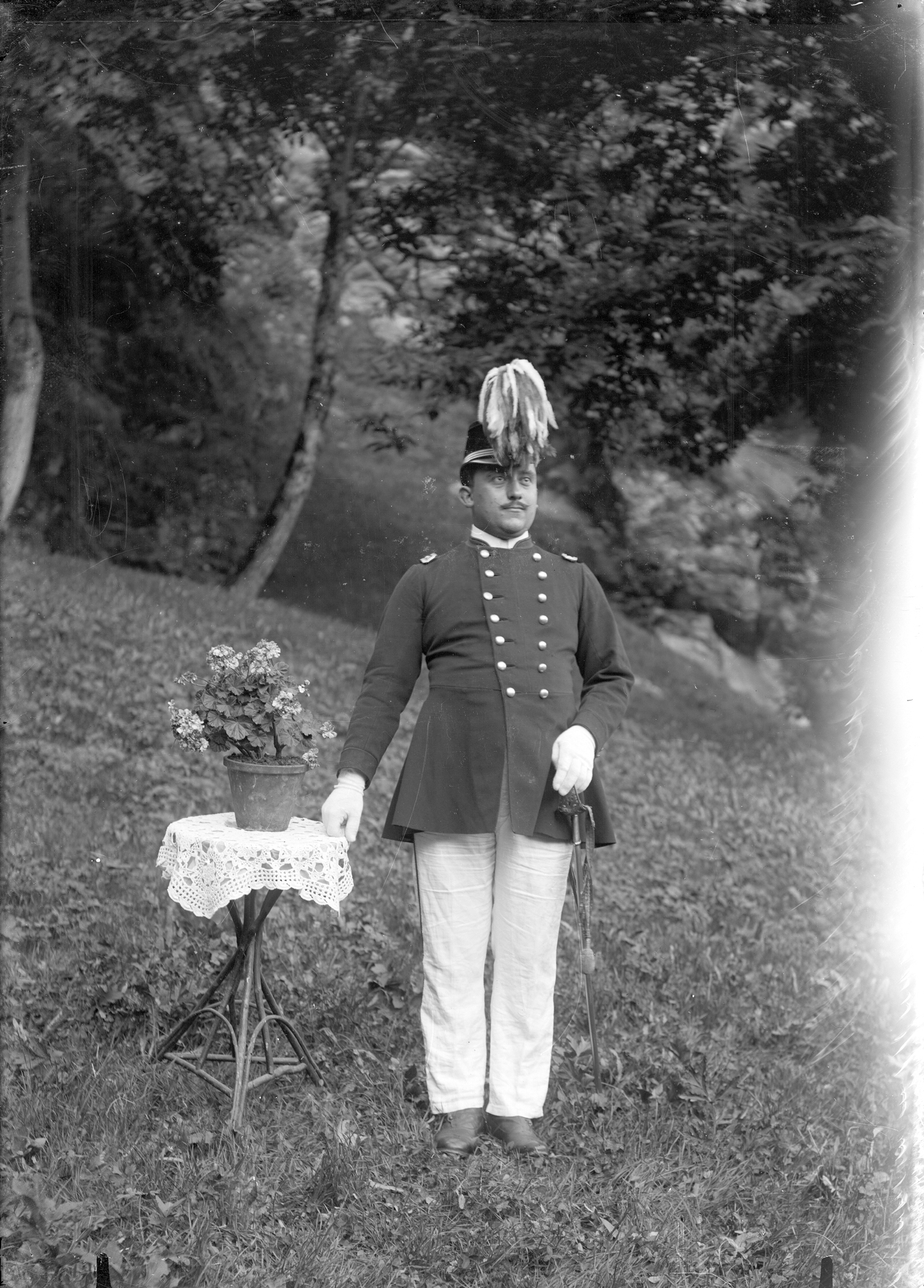A 200-year old battle unites and divides the Swiss

It was supposed to be an easy, three week campaign: in June 1812 Napoleon led his Grande Armée of over a half a million men into Russia, but at the end of the year less than five per cent of that enormous force straggled back across the border.
Of the 9,000 or so Swiss who took part in the campaign – enrolled under Switzerland’s treaty obligations with France – about 400 returned to tell the tale.
It was a campaign with few pitched battles; many of those who died perished from cold, hunger and disease and in Russian guerrilla attacks.
But the three-day battle at Berezina, in modern Belarus, in which 1,300 Swiss troops helped to hold off the Russians until the retreating French army had crossed the river, is seared into Swiss consciousness. Only 300 survived.
In a speech delivered on Swiss National Day this year, Defence Minister Ueli Maurer of the Eurosceptic Swiss People’s Party, used the anniversary to warn against the European Union’s attempts “to subject us to its jurisdiction”.
Swiss troops were dragged into the Napoleonic wars because the Swiss “political élite” in the 1790s had been “hypnotised” by the new ideas coming from revolutionary France, he explained. “They believed in a new, golden age. They saw their homeland as too small, too insignificant, too old-fashioned.”
In the face of more and more outrageous demands, they thought “they could satisfy the other side by giving in. Step by step they sacrificed the country’s sovereignty.”
Fribourg historian Alain-Jacques Tornare, a specialist in the period, who has written a book about Berezina and the 1812 campaign, told swissinfo.ch that Maurer’s speech had “infuriated” him. “In fact the Swiss managed their affairs very well. Napoleon wasn’t able to impose everything he wanted to on them. You can’t say Switzerland was just a French satellite – only to the same extent that all the other countries close to the French empire were.”
A new identity
But there is nothing new about using Berezina for political purposes.
All the historians to whom swissinfo.ch spoke pointed to the battle’s role in cementing Swiss identity at a time of upheaval.
The French invasion of Switzerland in 1798 had turned the old confederacy upside-down. Until then, the 13 existing cantons – all of them German-speaking – ruled over large swathes of the country as their “subject territories”. After initial attempts at centralisation failed, the Act of Mediation, promulgated by Napoleon in 1803, created a Switzerland of 19 cantons, where these territories had equal rights with their former rulers.
“Berezina showed that the Swiss were able to fight together, as equals, that the German-speakers were not superior to the French-speakers, that the men from Ticino [Italian-speaking] could be taken seriously, and were perfectly capable of fighting,” Tornare explained.
Ticino historian Damiano Robbiani, one of the co-authors of the book Milizie Bleniesi, published to mark the bicentenary, agrees. The Berezina story has been kept alive in a particular way in three villages of the Blenio Valley, where every year the men parade through the streets in traditional uniforms and to the sound of drums in a blend of religious and military ceremony.
“Before, when Ticino was ruled by the Swiss, it had no army. So now people started to learn the pleasure of wearing a uniform and firing off guns. The celebration is certainly linked to Ticino becoming fully Swiss,” he told swissinfo.ch.
Jürg Stüssi-Lauterburg, head of the Federal Military Library, who strongly believes that the French invasion retarded the reform process in Switzerland rather than moved it forward as many historians argue, also sees Berezina as a uniting force.
“Berezina was the first occasion with the new set-up of the 19 cantons, when they proved what they were able to do together. It was exactly what was required: a modern act of heroism as proof that Switzerland was able to re-establish its independence from a military point of view as well.”
“People can have very different interpretations about Swiss history, but still agree on the importance of Berezina. 1812 was a heroic Swiss action, but at the same time it meant the end of the power of Napoleon. The conservatives liked to see Napoleon cut down to size. The Bonapartists could always cling to the fact that people fought for Napoleon. You had different interpretations possible for the main political camps for the same action.”
Exploiting the story
Different interpretations have also been given at different times. The Berezina song – expressing hope in a better future, apparently sung by one of the soldiers at the battle – became popular at the turn of the 19th and 20th centuries, at a time when Switzerland was pushing a national cultural policy, with events like the national exhibitions, and the establishment of the national museum.
During both world wars the Swiss recalled Berezina, not least after Hitler’s invasion of Russia in 1941.
“The Second World War provided such a clear parallel: Hitler being cut down to size,” Stüssi pointed out. “That feeling certainly gave new life to the old myth, but the myth goes back to 1812.”
Stefano Giedemann, another contributor to Milizie Bleniesi, says that when he looked at books on the 1812 campaign which had re-examined contemporary sources, he found some had their own agenda.
“There were several publications during the world wars which didn’t present the events 100 per cent accurately. Some elements were suppressed, others highlighted,” he said.
Personal impact
But the impact of Berezina was not felt just on the political level. “It was a total tragedy. No-one ever found out what had happened to many of the soldiers. The families couldn’t mourn them properly,” said Tornare.
Not that the authorities at the time were unsympathetic, but in the chaos of the retreat it was impossible to keep track of events – added to which, wounded men and army records fell into enemy hands.
The human tragedy had practical implications as well, as Tornare discovered. “I’ve seen in the archives in Fribourg as late as the 1840s people asking about this or that person, because there was an inheritance to be settled. Since they had disappeared, they weren’t officially dead.”
No wonder that the very name of Berezina has entered the French language as a word for a total disaster.
French troops occupied Switzerland in 1798, encouraged by some Swiss radicals who wanted them to overthrow the old regimes.
But attempts to restructure the country led to conflict between federalists and centralisers. In 1803 Napoleon passed the Act of Mediation, which restored the cantonal system while giving former subject territories cantonal status.
Under the new system the Swiss were obliged to supply troops to France.
This was very unpopular, and the number to be supplied was gradually cut from 18,000 to 12,000.
In all about 30,000 men served in the French army between 1805 and 1815, out of a population of some 1.5 million.
They normally had four year contracts, but often renewed them – not least because they were often far from home when they expired.
Swiss troops serving in Napoleon’s armies continued to wear red uniforms such as those used by the mercenaries who had served the old French monarchy.
Other Napoleonic troops wore blue; red was the colour of the British enemy.
Switzerland had been known for its mercenary tradition since the Middle Ages. It is estimated that between 1400 and 1848 more than two million Swiss mercenaries were employed by foreign powers.
Initially mercenaries tended to be recruited for single campaigns by private entrepreneurs. From the mid-17th century mercenary units started to be integrated into standing armies, which were also being established at that time.
Mercenary service was strictly regulated, and under the control of the cantonal governments.
Under frequently renewed agreements with France, Swiss soldiers served the French king until the French Revolution.
Similar agreements, or capitulations, were also signed with many other states; for example, the Roman Catholic canton of Lucerne sent mercenaries to Spain, while Protestant cantons made agreements with the Dutch Republic.
Under Napoleon the nature of Swiss military service was fundamentally changed; it was no longer the outcome of agreements entered into by the two sides, but became an obligation imposed on Switzerland.
After the collapse of Napoleon’s regime, the old tradition was partly revived: under an agreement of 1816 Switzerland again furnished troops to guard the French king.
However, the tradition came increasingly under attack; the signing of new capitulations was forbidden in 1848; as of 1859 all forms of foreign military service without the permission of the central government have been banned.
The only remaining Swiss in foreign service are the Vatican Swiss Guard, established in 1506.
La Bérézina, by Thierry Choffat and Alain-Jacques Czouz-Tornare, was published by Cabédita in 2012, in French.
Milizie Bleniesi, by Davide Adamoli and Damiano Robbiani, was published by the Museo storico etnografico dealla Valle di Blenio in 2012, in Italian, with brief summaries in French and German.

In compliance with the JTI standards
More: SWI swissinfo.ch certified by the Journalism Trust Initiative











You can find an overview of ongoing debates with our journalists here . Please join us!
If you want to start a conversation about a topic raised in this article or want to report factual errors, email us at english@swissinfo.ch.